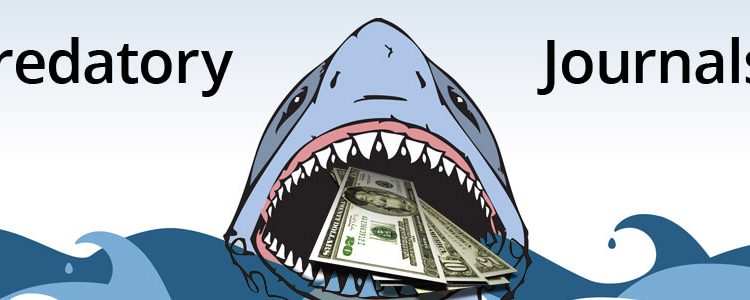How to Identify Predatory/Fake Journals

Publish Anything for a Fee
When the phenomenon of open access began over a decade ago, it was welcomed as a positive step in the dissemination of current scientific research results. Over time, however, that potential appears to have been squandered. This is due to an onslaught of questionable, predatory journals that are willing to publish anything for a fee.
Too Good to be True?
Competitive pressures in all fields of academic research have created a fertile breeding ground of novice or simply overwhelmed researchers looking to publish their results. If you’re on the receiving end of gentle reminders to publish, publish, publish, a well-written email from a seemingly legitimate journal asking you to submit a paper might seem like the answer to your prayers. The journal might sweeten the invitation by asking you to join the editorial board as a “valued contributor”.
You will no doubt be aware that prestigious journals are already so overwhelmed with research paper submissions that they never have to solicit for articles.
Related: Worried about accidentally choosing a predatory journal for your manuscript? Check out the Enago Open Access Journal Finder now!
Nevertheless, you might convince yourself that this new journal has just started and it needs your help. Moreover, if having publications keeps your department Chair off your back for a while, even better! So, you spend a couple of hours looking at the website and do some rudimentary research on this “new” journal. And then you realize something is fishy! This is where it’s back to the same question: how to identify predatory/fake journals?
Simple Warning Signs That Will Help
The ace in the hole for questionable journals appears to be the willingness of desperate researchers to accept the bogus information with which they are presented at face value. Jeffrey Beall, a research librarian at the University of Colorado maintains “Beall’s List” of “predatory open access journals,” and flags questionable journals with specific reasons for inclusion on his list. Here are some indicators to look out for:
- The journal has no address or contact information other than an email address listed.
- There are articles listed but no evidence of an editorial board to review those articles.
- The website has an overwhelming number of images from major publishers who would have no reason to partner with this journal.
- The editorial board seems to contain very prominent researchers who would be too busy to work with an unknown journal.
- There is no mention of an APF. This means you’ll likely receive an outrageous bill after your article has been rapidly accepted for publication.
- There is no mention of a peer review process or basic submission requirements.
Often it’s Not Black or White—Investigate
For dedicated professionals like Jeffrey Beall, who invest countless hours in maintaining lists of questionable journals, the ever-increasing volume of reports of unethical journal conduct is prompting consideration of a change of strategy. Duping novice researchers to hand over APFs that can range from hundreds to thousands of dollars is now so lucrative that it may be easier to maintain a “white list” of reputable magazines than to try to keep up with a “blacklist” of journals to avoid!
The temptation to jump at the chance of getting published is considerable. However, taking the extra steps to question the information presented to you can save you both money and frustration.
Do some basic research on journal blacklists to see if this journal is listed (and confirmed) as questionable. You don’t have to be Sherlock Holmes; just verifying one or two items should be enough to pierce the veil of credibility. Is that well-known researcher really attached to this journal? Moreover, run the site content through text-matching tools and find out if the content has been pirated from other sites.









Dear
this journal Open Access Library Journal
accept one of my paper and I pay the fee after that the paper did not published and they did not response to any email i send to them asking about my paper and why did not appear in the journal web site
Hi Olfat,
Sorry to hear about your experience with this journal. Could you please share with us more details about this journal and the fee that they charged you for processing your article? Once you share this information with us, we can suggest a few solutions. Meanwhile, please go through our articles on predatory publishing. Here are the links:
https://www.enago.com/academy/top-ten-tips-on-identifying-predatory-journals-and-conferences/
https://www.enago.com/academy/identifying-predatory-journals-using-evidence-based-characteristics/
https://www.enago.com/academy/think-check-submit-a-new-approach-to-journal-selection/
Hello Olfat
Sorry to hear about the experience you had with the journal. Thank you very much for sharing it here. My current position, research performance, involves conducting workshops on deceptive and vanity publishing for the staff of the university where I work. I am actually going to include your experience in my next week workshop to raise awareness. Now my question is: have you heard back from them yet?
I had my master’s thesis published in Lambert Academic publications and well it was only much later that I got to know it is a scam.